Petunia flowers look elegant anywhere - on the veranda, near the house, in the garden or on the balcony. Multiple color palette and flower shape makes petunia to a win-win option for creating live flower compositions or growing it into caspo as self-sufficient culture. In addition, Petunia is completely unpretentious, and it is easy to grow at home from the seed.
Domestic petunia, cultural description
Today, the varieties of petunia are calculated dozens. This allows you to grow colorful clouds from petunias in porridge, form floral garlands on terraces, decorate balconies with large petunias.
Petunia is a semi-student plant from the family of the Parenic. This bright fragrant flower got into Europe from the southern coast of America, and his homeland is Paraguay and Brazil. In natural conditions, Petunia is a perennial that grows up to a height meter. And only hitting the cultural medium of habitat, Petunia acquired a view of a small bustle, which, depending on the variety, can be from 20 to 70 cm.
Petunia inflorescences are distinguished by a funk-shaped form, and form on short blossoms. The color of petals can be different: from gently pink to a saturated purple, from pale blue to dark purple, from milk to the crimson. Inflorescences can be both monophonic and unique color combinations: with decorative asterisks, a contrasting border, stranded pattern, smooth watercolor transition of different shades.
Petunia leaves can acquire bright or dark shades of green, their shape oval, length from 6 to 12 cm. Petunia stalks straight, with thick sprigs.
In the development process, a bush is formed by the correct silhouette, which eliminates the need for decorative trimming. The only thing is required - the tipping of the top for more intensive growth in width.
In the natural range of waste, Petunia is multiplied by the seed method. Its seeds are matured in a double box and have a very small size (0.8 mm). In one box, it can safely divert, and then sowing about 100 seeds.
Petunia at home, varieties and varieties
Hybrid petunias by the magnitude of the inflorescences of gardeners are divided into two groups. The first group is large-flowered, which have inflorescences up to 13 cm in diameter. The second is multi-flowered, which are covered with a plurality of fine inflorescences (5-8 cm in diameter).
In the appearance of the bush, all petunias are divided into subspecies: ampel, bush, cascade, as well as floribunda.
Advice! Large petunia varieties are better grown on spacious terraces, and small petunias on the balcony.
Garden hybrids petition are more suitable for home cultivation. New varieties are much longer bloom, resistant to diseases and deliver very little hassle for their owners. To make it easier for you to figure out the modern diversity of petunition, consider their main groups and popular varieties.
Multi-flowered petunia A varied and numerous. All group varieties are called multifolore. These petunias are Rannetic and during flowering, the bush is covered by numerous inflorescences up to 5 cm in diameter. Therefore, these compact bushes are excellent for small premises. Multiflora is absolutely not picky, and easily adapts to any conditions.
Popular varieties:
- Fenthies - the varietary series consists of 9 hybrids. Height Kusty up to 20 cm, Bud in diameter 3-4 cm. Color: Brown with white asterisk, black and purple, scarlet with cream zev, etc.
- Mirage - Terry Petuni Series. The total number of hybrids has 13 varieties. Inflorescences are large from 5 to 9 cm, color is different - purple with a purple mesh, snow-white, raspberry, iscin-black.
- Plascuristals - Spacidious bushes with a height of 26-30 cm, the flowers reach 7 cm. A variety feature is a gradual fading of brightness of petals.
Large-flowered petunia - Grandiflora - can boast of large inflorescences up to 16 cm in diameter. This group is the most numerous and more than one hundred varieties. However, the size of the inflorescences is compensated by their few during flowering. In addition, the buds are very fragile and are easily damaged, so for such petunia compensation on elevations, for example, in porridge on balconies. The most popular series of large-flowered petunias:
- Parple Pirouette - terry saturated-purple flower with white corrugated crossing in a circle. This variety of petunia in pots looks just excellent.
- Hit parade - low-spirited petunias with a large palette of colors. The bushes are compact up to 40 cm in height. Inflorescences up to 10 cm in diameter, dissolve from the interval of 6-7 days. Colors - cream, pink, blue, crimson.
- Picotics - a varietal series of 4 hybrids. All of them are distinguished by corrugated ending of petals with a wide border of white. Buckets are low to 20 cm, the color of the petals of the crimson, dark purple, crimson.
Petunia ampelnaya immediately learned on falling flexible branches, so all the varieties of this species look great in the porridge and are often called balcony. The varieties of this group grow rapidly, their bloom is abundant and long, right up to frost.
The most common varieties include:
- Surfinia - the size of flowers in crossbar from 5 to 9 cm depending on the hybrid. The variety is inherent in all shades besides yellow and orange.
- Tumbler is a Japanese range with large terry inflorescences. The color of buds is the most diverse.
- Copter - miniature petunias with small flowers of 5 cm each. Colors and shades of all sorts.
Petunia Floribunda It occupies an intermediate position between multifolore and grandioflora. Floribunda has several subgroups, which are distinguished by both external features and endurance to the conditions of cultivation. These two subgroups are growing more often:
- Sonya - has 11 hybrid varieties. Sonya orchids, whose petals have contrast resilience look especially nice. Coloring colors: blue-purple, bloody-cherry, salmon pink, etc.
- Ceblebriti - has a unique color with a thick grid of dark veins at the base of inflorescences. The bushes grow low - 20-25 cm. Flowers are more than 30 shades.
Cascade varieties Petunia most often grown at home. Soothes on the bushes quickly rush up and in the sides, forming a bulk ball with beautiful buds. For the design of balconies and terraces often use Typhoon, Silver and Cherry varieties. They are characterized by the inflorescences of medium diameter and very long shoots up to 100 cm.
How to grow petunia from seeds at home
The process of growing petunition in general is not complex and time consuming. The main thing is to choose the right time for sowing and create the most suitable conditions for Petunia and the result will not make you wait. You can only sow fresh, correctly assembled and dried material, otherwise the germination will be very low. Therefore, it is better to use seeds of proven sellers or their home seeds of petunia.
When Pokunia's sowing is being seeded at home
There is a generally accepted recommendation to start sowing seeds in the second decade of March. But the choice of time for sowing may vary depending on the following reasons:
- If seedling will be grown on the southern window, sowing can be held in the first days of March.
- When providing sufficient artificial lighting, seed seeds in February.
- The cultivation of petunition in the northern part of the premises provides for seeding seeds in early April.
Too early landing of seeds will definitely affect the state of young sprouts - they will be weak and painful. Therefore, it is better to pay a little bit and get healthier flowers. True, petunia bloom may be a little late.
Optimal soil for homepage
For petunia fits loose, preferably neutral soil. The soils should be quite nutritious, to absorb moisture well, but not to cause water stagnation. You can choose one of these options:
- A mixture of 2.5 l shopping soil, for example, stand, 125 g of perlite, floor tablespoon of potassium sulfate and as much kemira.
- Substrate from two parts of the turf, two parts by humus, as well as parts of sand and peat parts.
- Sand from sand, garden land and peat in a 1: 1 ratio.
Important! Before sowing seeds, the soil must twice sift through the sieve, and then soak in a weak solution of potassium permanganate or prejudice.
Sowing seeds Petunia at home
Petunia seed landing is carried out according to such a scheme:
- The container is selected with drainage holes, its height can be 10 cm and more.
- Then it is processed by a solution of manganese.
- At the bottom, the pot is laid out a clay, and the prepared primer is embanked on top.
- On the moistened soil lay the seeds, without covering the earthy ball.
- Film shelter building on top.
- The crops are kept in a lit place at a daytime temperature not less than 20 ° C.
- Watering is carried out daily in moderate quantity by spraying.
Very convenient to grow petunias at home in tablets. This method is used for sowing the dued seeds. To do this, use peat pills for 3.5 cm wide:
- tablets are soaked in water, then pressed excess liquid;
- put one seed into each tablet;
- pipette bury a few drops on the seeds;
- when the shells are twisted, they are smeared by toothpick to alleviate the germination of petunia;
- after that, the tray is covered with glass and put in a warm place.
Care for seeding petunia at home
If the sowing material was high-quality and all the conditions for growth were observed, the seeds of Petunia will proceed to the fourth-fifth day. At this stage, seedlings need diligent care:
- Weak spons you need a lot of light. If they are in shading, they will not be able to grow. In case of insufficient daylight, it is necessary to provide petuniaux additional backlight. For this use fluorescent lamps or special lighting plants. The duration of such lighting for petunia home should be 12 hours a day.
- Important and competent watering. Moisturize the soil is better in the evening, using warm and necessarily dilated water.
- To prevent the development of the disease "Black leg" requires daily ventilation of the greenhouse. The duration of aeration should increase gradually starting from three minutes.
- If the seeds were sown into the nutrient substrate, the petunia feeding is not carried out. If the soil was poor, after the appearance of the first leaves, the seedlings are fed two or three times a week. You can use, for example, micro chloride.
Piking petunia at home
When three full-fledged leaves are formed on seedlings, not counting the seedlines, Petunia transplant is carried out. Use the same soil as for sowing. It is also disinfected and moisturized. Seeders carefully remove from the container and the transshipment method "settle" on a separate small potted.
After picking seedlings, the root system is actively increasing and after 1.5 months you need to reciprocate petunias in a more voluminous pot, where they grow until the change in Cashpo.
Rules of pieces of Petunia
At the appearance of an adult bush of Petunia affects the patching of seedlings. In order for the shoots well to grow in the width and were thick, at the level of the 5th full-fledged sheet, pinching is carried out. After that, Petunia quickly grow up, forming many young shoots.
Petunia, home care
Petunia is branched and bloom well only in comfortable conditions, creating which is completely simple. Petunia landed at a permanent place in June. Balcony vases or porridge better place from the south, where much light. For growth, a full-fledged air flow is also important, so glazed loggias need to be used frequently.
How to pour petunia at home
Petunia The moisture-loving plant and watering is needed frequent. It should be borne in mind that the flowers feel better in a slightly dry, rather than the moistened soil, so we need to water as the soil grain.
It is necessary to use a slightly warm, well-resistant water. To make it better under the root, so as not to injure fragile inflorescences. The next day after irrigation, you need to loosen the top ball of the soil.
Optimal Petunia Room Fertilizer Schedule
Petunia feeding should be started after a transplant to constant vase. Petunia fertilizers are suitable for complex liquid for flowering plants, urea is also suitable. Fertilizers are appropriate twice a month since June.
If the petunia does not form buds, you need to create "stressful conditions" for it - to completely remove the feeders, minimize watering and reduce the amount of daylight. After some time, return the flower into normal growth conditions. In most cases, such stress helps the plant "wake up".
To stimulate a full growth, if it is late late, the vitamins of group B. It is necessary to take the vitamin Vitamin B1, B6 or B12, dilute in the glass of water and spray the foliage every 7 days. It is better to use these vitamins in turn.
Pests and sickness of indoor petunia and their treatment
Petunia rarely sick with proper care. If the conditions suitable for it are not created, for example, a heavy or acidic soil is chosen, seedlings are too thickly planted or abundant irrigated watering, petunia can be sick with a banging rot or fungal disease "Black leg". Signs of the disease - the darkening of the root part of the petunia and softened downstream shoots. The sick copies are removed, and the rest are treated with fungicide.
Sharp fluctuations in temperature and elevated humidity cause mildewing, which is manifested by a white sticky flare on the foliage. The fallen pieces are cut off, and the plant is treated with gray.
Under the conditions of unstable humidity, Petunia may affect the web mite. He sucks all the juice from the leaves, and the plant turns yellow and begins to die. Therefore, if yellowing is petunia and what to do, you do not know, the first thing you need is to consider your flower. If under the magnifying glass noticeably the movement of small red dots is mites. Concentrated soap solution, tincture of tobacco or tobacco vehicles can be destroyed.
Petunia reproduction with room cuttings
In addition to the seed method for propagation of petunitions, also takes place. In the summer, a few side shoots are cut down 7-9 cm each. Choose cuttings with 4 full-fledged leaves.
The cuttings stick into separate pots with soil, as well as for seeds, covered with banks from above. Then the blanks put on a light place at 22 ° C, often moisturize the soil, avoiding condensate. After the appearance of the first leaves, the shelter is removed and continue the same care, as for the seedlings.
Due to the amazing grace of inflorescences, simple agricultural engineering and unique properties to develop in different soil and climatic conditions, petunias once and forever fell like a flowerfish. Given such a demand for this culture, new varieties and hybrids are constantly being created, which allows annually to enjoy the renewed beauty of petunition at home or in the garden.

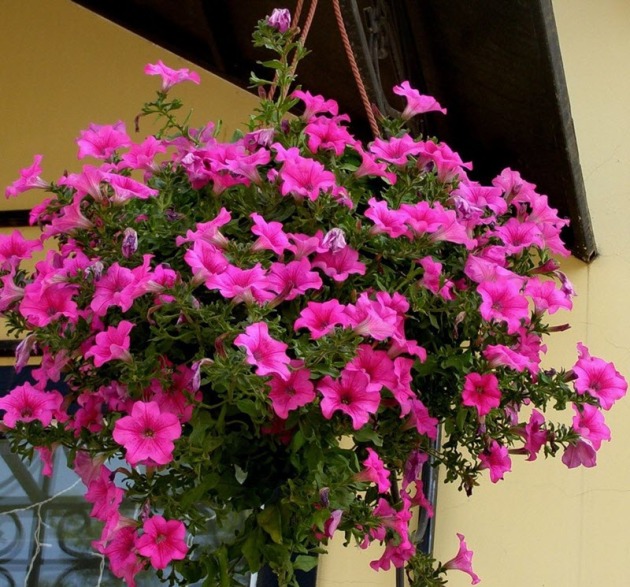
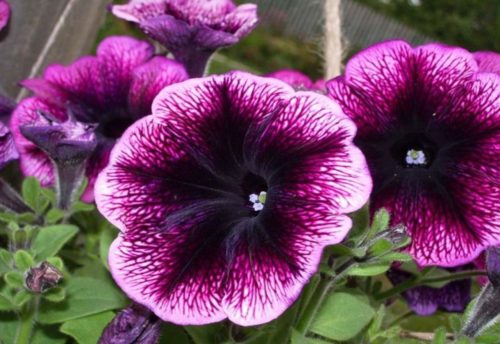

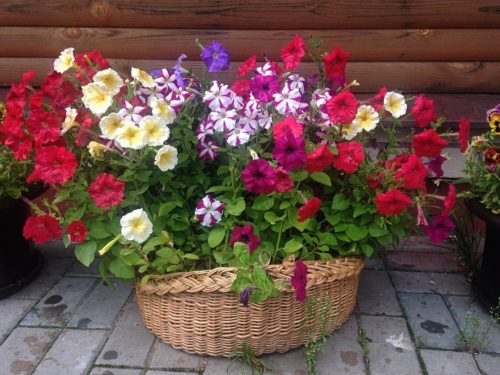
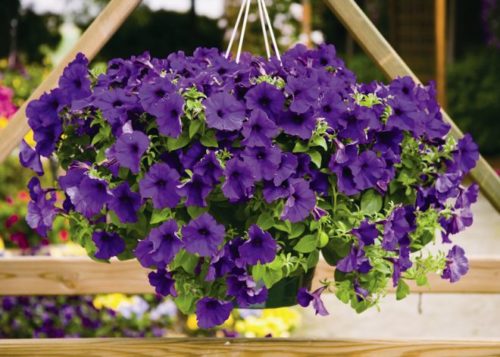
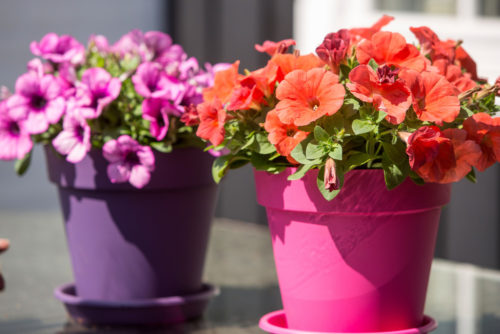
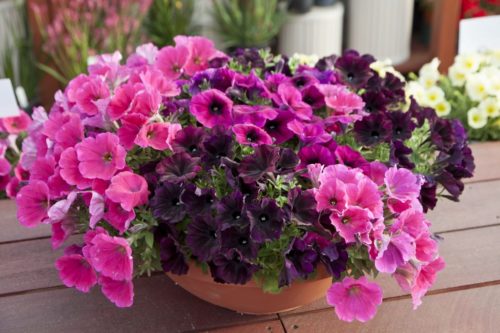
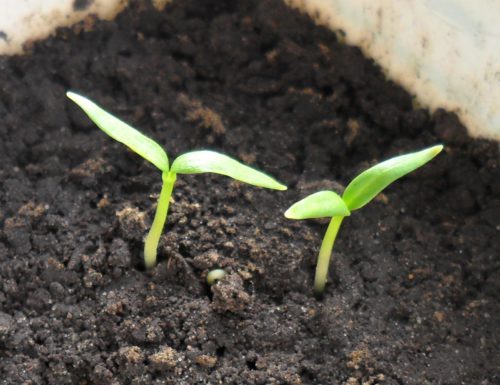
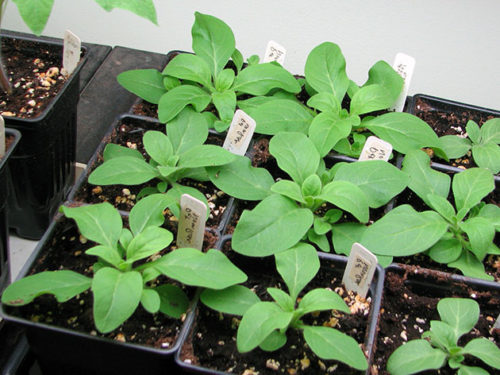
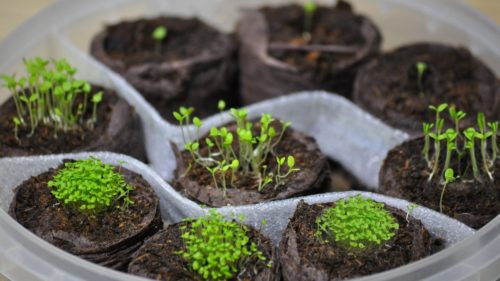
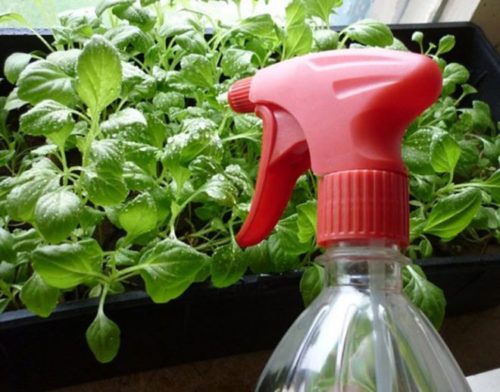
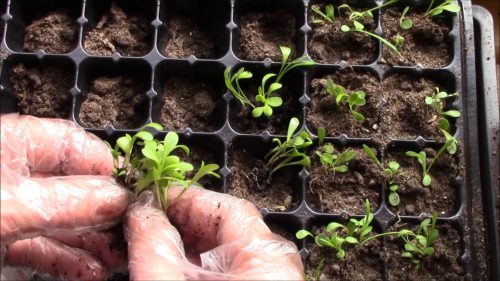
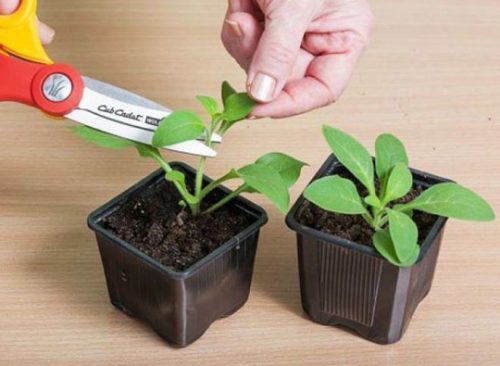
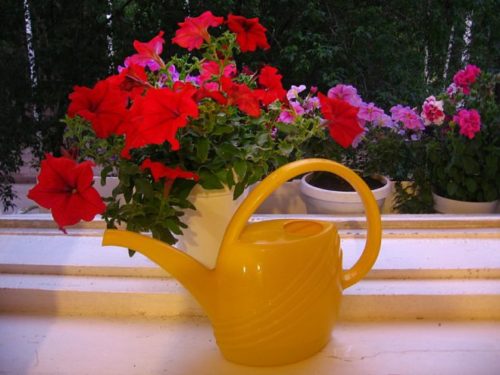
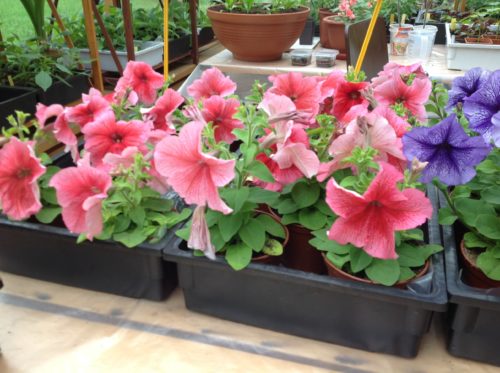
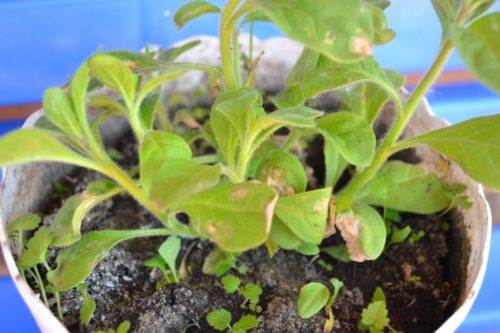
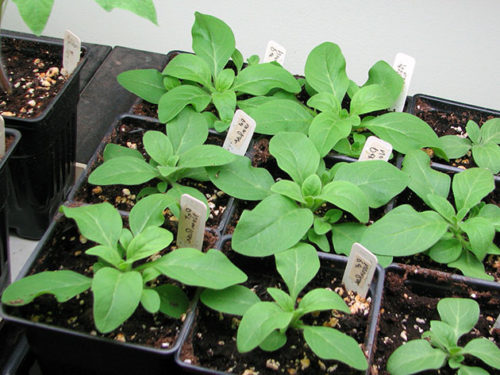
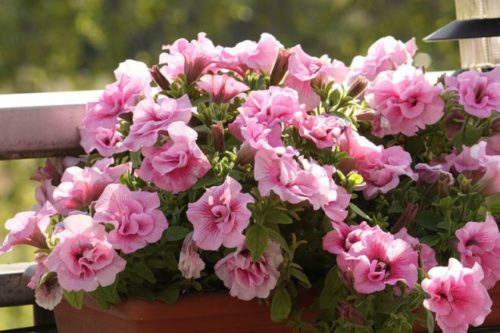
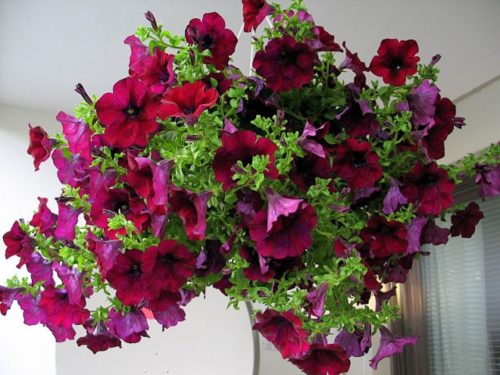
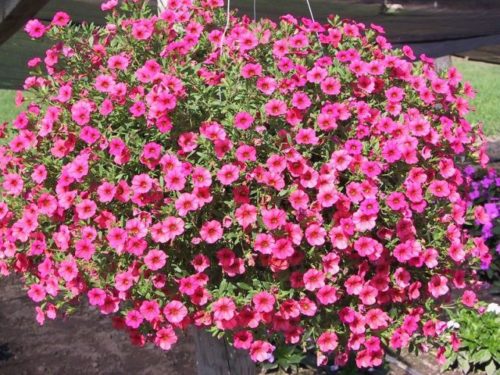
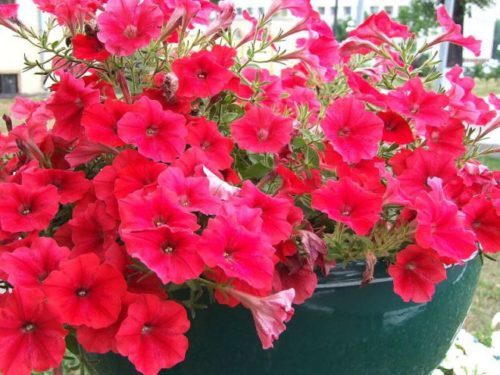
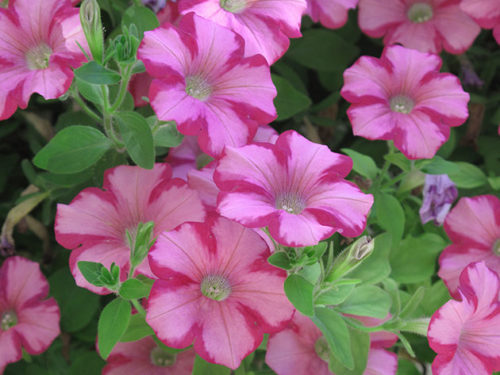


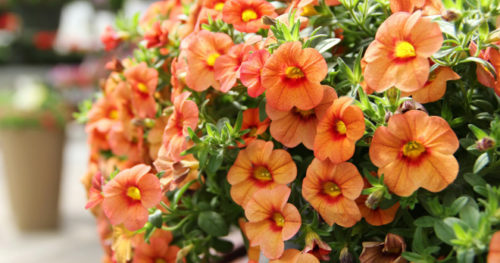












 Start a discussion ...
Start a discussion ...